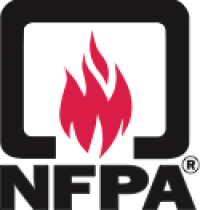Content provided by NFPA
The National Fire Protection Association (NFPA) has released a free, online training program to help more than 29,000 fire departments in the U.S. improve existing public safety drone programs and establish new drone initiatives.
Small unmanned aircraft systems (sUAS) or drones have made a rapid transition from hobbyist toys to serious life-saving tools in recent years. Recognizing that drones can support public safety preparedness efforts and supplement emergency response tactics, fire departments across the country are expanding their use of viable drone technology. The transformation underway will likely improve public safety outcomes, while presenting new challenges for both fire service drone program administrators and the fire personnel charged with operating such aerial technologies.
“Drones offer the fire service increased situational awareness advantages during structural and wildland firefighting attack, search and rescue missions, HAZMAT assessments, and natural disaster response. They can effectively augment public safety planning efforts, as well,” said Christian Dubay, P.E., NFPA vice president and chief engineer. “But in order to be safe and successful, it is important for fire department drone programs to be built in accordance with FAA regulations, regional rules, and the guidance found within NFPA 2400, Standard for Small Unmanned Aircraft Systems (sUAS) Used for Public Safety Operations.”
The new NFPA online learning is designed to provide recommendations and best practices so that fire departments can take their drone programs to a higher level. The four-hour self-paced modules with interactive videos, virtual reality tools and other dynamic components are designed to help first responders grasp and remember important drone safety information.
After taking the training, administrators will know how to:
- Analyze costs and benefits
- Choose the right program
- Select and maintain systems
- Establish program definitions and deliverables
- Develop policies and procedures
After taking the training, operators will know how to:
- Build an operational framework
- Create a cohesive mission plan
- Prioritize pre- and post-flight operations
- Prepare for take-off, line of sight and aerial maneuvers
- Set benchmarks for payload and data acquisition
NFPA applied for and received a FEMA Fire Prevention and Safety Grant so first responders have the information and insights needed to incorporate drone technology into emergency response and preparedness strategies. Additionally, the grant funding was used to develop a new public safety drone knowledge base that promotes voluntary information-sharing and collaboration amongst U.S. emergency response entities. The new training, knowledge base, NFPA 2400, related research, NFPA Journal drone coverage and relevant blogs can all be found on the dedicated microsite, www.nfpa.org/drones. The content on that page has been curated to help fire service administrators and operators create, manage, and maintain drone programs that are in sync with proper public safety protocols.
This latest online training offering for the fire service was spearheaded by the NFPA emerging technology team who has produced other beneficial virtual education solutions in recent years on potential emergency response hazards such as energy storage systems (ESS), alternative/electric vehicles (AFV/EV), and flammable refrigerants.
Visit nfpa.org/drones for free online training for fire service drone administrators and operators.













